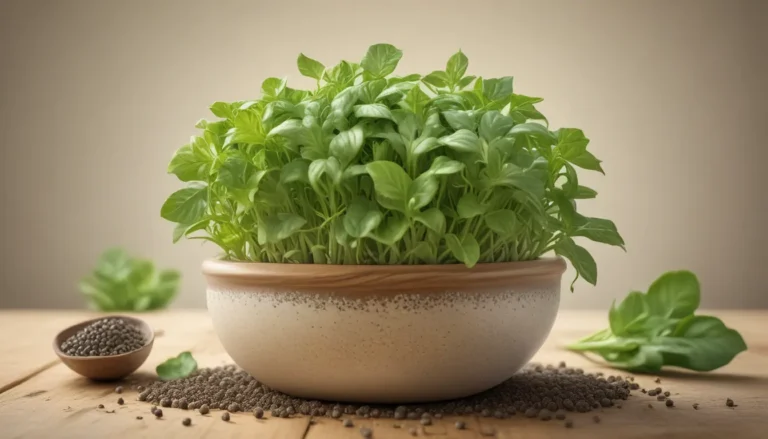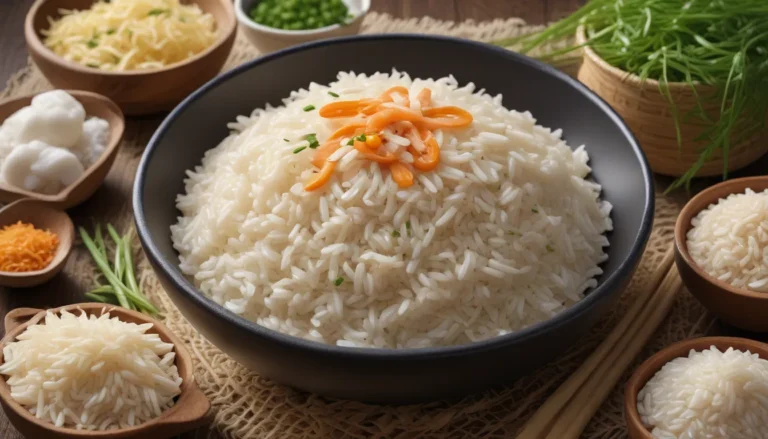The pictures in our articles might not always show exactly what the text is talking about. We use these images to make the article more interesting and eye-catching. They are there to add to the text, but not to replace it or show every detail.
Choy Sum, also known as Chinese flowering cabbage, is a versatile and nutritious leafy green vegetable that has captured the hearts of food enthusiasts worldwide. With its vibrant green leaves and delicate yellow flowers, choy sum not only adds beauty to your plate but also offers a plethora of health benefits. In this article, we will delve into the fascinating world of choy sum, uncovering its origins, nutritional value, cooking tips, and cultural significance. Whether you're a seasoned chef or a curious foodie, join us on this culinary journey to discover everything you need to know about choy sum!
Exploring Choy Sum: The Asian Delicacy
Choy Sum, a leafy green vegetable belonging to the Brassica rapa family, is a staple in various Asian cuisines. Originating in China, choy sum has been cultivated for centuries and is particularly popular in Cantonese cuisine. Known for its crisp texture and mild, slightly bitter flavor, choy sum is a versatile ingredient that can be stir-fried, steamed, or added to soups and hot pot dishes.
Nutritional Benefits of Choy Sum
Choy sum is not just delicious but also a nutritional powerhouse. Packed with essential vitamins and minerals, this leafy green vegetable offers a range of health benefits. It is a great source of vitamins A, C, and K, as well as calcium and iron, making it a valuable addition to a healthy diet.
Culinary Versatility of Choy Sum
One of the reasons choy sum is beloved by chefs and home cooks alike is its versatility in cooking. From stir-fries to salads, soups, and pickled dishes, choy sum can be incorporated into a wide array of recipes, adding a delightful crunch and flavor to any dish.
Cooking Tips and Techniques
Cooking choy sum is quick and easy, making it a convenient choice for busy cooks. Whether blanched or stir-fried, choy sum only takes a few minutes to prepare to perfection. Common seasonings for choy sum include garlic, soy sauce, oyster sauce, and sesame oil, which enhance its natural flavors and create a delicious umami taste.
Cultural Significance of Choy Sum
In Chinese culture, choy sum is often associated with prosperity and good fortune, making it a popular vegetable to serve during festive occasions and celebrations. Its traditional flavors and versatile applications in various dishes hold cultural significance in many Asian communities.
Bringing Choy Sum to Your Table
Choy Sum is widely available in Asian grocery stores, supermarkets, and local farmer's markets, supporting local farmers while ensuring the highest quality produce for consumers. If you're looking for inspiration, countless choy sum recipes are available, allowing your culinary creativity to shine.
Growing Your Own Choy Sum
For those with a green thumb, growing choy sum in your garden is a rewarding experience. Thriving in well-drained soil with regular watering, choy sum can be a delightful addition to your homegrown produce.
Culinary Pairings and Seasonal Availability
Choy sum pairs well with a variety of ingredients such as tofu, chicken, shrimp, mushrooms, and ginger, creating a harmonious blend of flavors. While choy sum is available year-round in many places, its peak season tends to be in the spring and winter months.
Choy Sum vs. Bok Choy: What’s the Difference?
Choy sum and bok choy, often confused due to their similar appearance, have distinct differences in taste and texture. While choy sum boasts a milder flavor, bok choy is slightly more bitter, offering unique culinary experiences.
Embracing the Wonders of Choy Sum
Choy Sum, with its delightful taste and impressive health benefits, is a fantastic addition to any meal. From its vibrant green leaves to its delicate yellow flowers, this versatile vegetable is not only visually appealing but also packed with essential nutrients. Rich in vitamins A, C, and K, as well as minerals like calcium, iron, and potassium, choy sum supports overall health and well-being.
In conclusion, choy sum is a delicious and nutritious vegetable that deserves a place on your plate. With its delicate flavor, vibrant colors, and cultural significance, choy sum has become a beloved ingredient in cuisines around the world. So why not give it a try and discover the wonders of choy sum for yourself?
Frequently Asked Questions
- What is choy sum?
Choy sum, also known as Chinese flowering cabbage, is a leafy green vegetable commonly used in Asian cuisines. It has tender stems, dark green leaves, and delicate yellow flowers. - How do you cook choy sum?
Choy sum can be stir-fried, steamed, or added to soups and stir-fry dishes. It is quick to cook and can be enjoyed with a variety of seasonings and sauces. - Is choy sum nutritious?
Yes, choy sum is highly nutritious. It is rich in vitamins A, C, and K, as well as minerals like calcium, iron, and potassium. These nutrients are essential for maintaining good health. - Where can I buy choy sum?
Choy sum is available in most Asian grocery stores and some supermarkets. You can also try looking for it at local farmers' markets. - Can choy sum be eaten raw?
While choy sum is typically cooked, you can enjoy it raw in salads or as a garnish for certain dishes. Just make sure to wash it thoroughly before consuming.
Choy Sum's delightful taste and impressive health benefits make it a fantastic addition to any meal. For more ways to incorporate nutritious vegetables into your diet, explore our article on Butter Lettuce Nutrition Facts. If you're a fan of flavorful Asian dishes, don't miss our Fun Facts about Chinese Food. And for those looking to expand their leafy green repertoire, our piece on Butternut Lettuce is sure to inspire.






